Activists are the Engine
Egypt Dispatch 3--Finally some noise at the COP
There is a ritualistic quality to these climate summits—this is the 27th, after all. (The great Canadian environmentalist Elizabeth May, many years ago, hugged me from behind at one of these gatherings and said “it’s just like a family reunion—aboard the Titanic.”) The talks slow on the weekend (Joe Biden came and went yesterday, giving a straightforward speech that everyone had to listen to, since the US, thanks to the Inflation Reduction Act, is now a player and not a laggard). And traditionally, on Saturday, civil society takes over, with a giant march through the city.
I remember many of these affairs—most vividly, maybe, a cold, giant, and angry march of at least a hundred thousand through the streets of Copenhagen in 2009, with Danes appalled at the collapsing conference setting small fires and, in a Scandinavian way, jousting with the police. The Paris talks came in the wake of the Bataclan nightclub massacres and so there were understandable restrictions on gathering; still the streets were alive with protest. And last year in Glasgow was wonderful—the youth march, especially, which gathered in a park amidst the trees, Greta near its head.
This year was different. The march was about three hundred yards long (my watch counts steps and I took about 800, and I was dancing back and forth to take these pictures). Instead of winding through the streets, it walked down a hot and dusty access road between two of the warehouse-style buildings that house the pavilions of various countries and interest groups. That’s because this COP is taking place in, well, a cop state. Egypt doesn’t allow protest out in the wild; we were in only politically free five acres in this vast country.
And yet for me there was at least one thing redeeming in its shrunken size—it let me pick out many of the faces (old and weathered or young and fresh) that make up the core of climate activism around the world. There have been a few groups of people whose inspiration has been absolutely necessary for the planet to even starting to take on the climate crisis: scientists, who provided the insights to let us know what was wrong; engineers, who provided the tools (solar panels, wind turbines, batteries) that give us a chance; and activists, who have provided the pressure that might let us speed climate action enough to begin catching up with the dire physics that the scientists first understood. Plenty of other people are required—businesspeople, diplomats, heads of big NGOs, and bureaucrats all have important roles to play, and they are all in evidence here. But in some sense they are interchangeable—indeed, today’s environment minister is often yesterday’s tourism minister and tomorrow’s commerce minister.
But the activists—well,I hesitate to even start naming names, because there are a thousand for every one listed here. (Most of them aren’t in Egypt—read Peter Kalmus’s thread about the stunning protests against private jets going on this weekend too). Still, many of my inspirations were on hand. I looked at Tom Goldtooth, of the Indigenous Environmental Network,
rightly at the front of the march, and I thought of million conferences and protests and webinars he’s patiently attended; had he not done that work (alongside many others) then the great gathering at Standing Rock, with all its meant for movement building around the world, could not have happened in quite the same way
Or Tasneem Essop, who like many learned to fight power during the apartheid days in South Africa (when she came to the bullhorn she began with the cry “Amandla,” and many in the largely African crowd knew to answer “Awethu,” which is more or less Power to the People) and who somehow manages to coordinate the 1,300 member groups of the Climate Action Network
Or Harjeet Singh, most dapper of all activists, who has worked in and out of the UN agencies for many years, but never become a bureaucrat—always, instead, a strategist for translating outside agitation into inside power
Or gentle unyielding Yeb Sano, whose turn from official diplomat to activist amid the chaos of Typhoon Haiyan—he began a fast at the Warsaw climate talks in 2014—was one of the great emotional boosts in the history of the movement, helping animate the climactic Paris talks the next year.
New leaders are constantly emerging, often pushed by the force of events. Svitlana Romanko, for instance, had always been a stalwart and effective campaigner, at 350.org and the Global Catholic Climate Movement; but when Vladimir Putin invaded her native Ukraine this year, she was forced to become something much more, a spokesman for the crucial proposition that fossil fuel equals fascism. She rose to the occasion spectacularly, and it was a joy to be able to celebrate the liberation of Kherson here in Egypt today.
Whole regions have produced remarkable fighters—here are some of the Pacific Climate Warriors, who punch so far above the modest populations of their tiny islands that it’s hard to even imagine.
Along with African activists—who were definitely today’s most powerful voices—they were the ones that gave us the 1.5 degree target, first shouted as a slogan in a march like this one inside the Copenhagen meeting, and eventually enshrined in the Paris accords.
And happily the movement keeps reproducing itself, as a younger generation of activists emerges to the fore. The most famous of them isn’t here—Greta’s decision not to fly on planes was, among many other things, a generous way to cede attention to others. But she was not absent either—this march chanted “no more blah blah blah” as it marched past the delegation offices, remembering her apt summation of the Glasgow accords.
So many others were on hand—Luisa Neubauer, now a skillful navigator of the corridors of European power, or Mitzi Tan bringing the heat from the Phillipines on behalf of Fridays for the Future
or Disha Ravi, who I was truly delighted to finally meet. A young Indian woman, she was arrested and charged by the ever-more-authoritarian Indian government last year for her protests; they wouldn’t let her come to Glasgow; she’s here, she told me, “on parole,” and it gave everyone a boost to see her courage.
Or Ugandan Vanessa Nakate, who came to world prominence when the AP cropped her out of a picture at Davos while she sat alongside Greta. She is a wonderful voice at this African COP, but also just a wonderful voice period, and she tweeted out a picture yesterday that I want to share even though I’m in it because I think it captures something moving.
The assumption is that activists must be gregarious, extroverted, aggressive. Somehow this image captures for me the fact that many of us are the opposite—sometimes shy, introverted, out of place. It is hard to just decide to speak up, to try and make the world listen. We do our best.
But of course not all of us can, at least relatively easy. This COP is carrying on under the shadow cast by the thousands of political prisoners in Sisi’s jails. The title for today’s march was “We Have Not Yet Been Defeated,” which both sums up the climate crisis pretty accurately and is (almost) the title of the essay collection by the most famous of those prisoners, Alaa Abdel Fattah. (I’ve been wearing a t-shirt I printed up with his name on it around the conference, and it’s been enough to earn me a trailing cordon of a couple of large men with earpieces; I feel like a head of state, kind of). His sister Sanaa—a woman of great grace and courage, now facing charges of “subversion” for defending her brother, who has been sheltering at the conference because the government won’t arrest her in front of the international press—was at the rally today,
but instead of speaking she asked her remarks be read for her. “I came here thinking I would be alone,” she said, “but instead I found my family here. Know that your voices have echoed into every dark corner of every prison cell. I go to Cairo tomorrow to stand outside the prison gates with my mother, but I know I don’t go alone.”
That is indeed how movements work at their best. Alongside the solar panel, the nonviolent social movement was the key technological innovation of the 20th century; if we survive the 21st, it will be because of both.



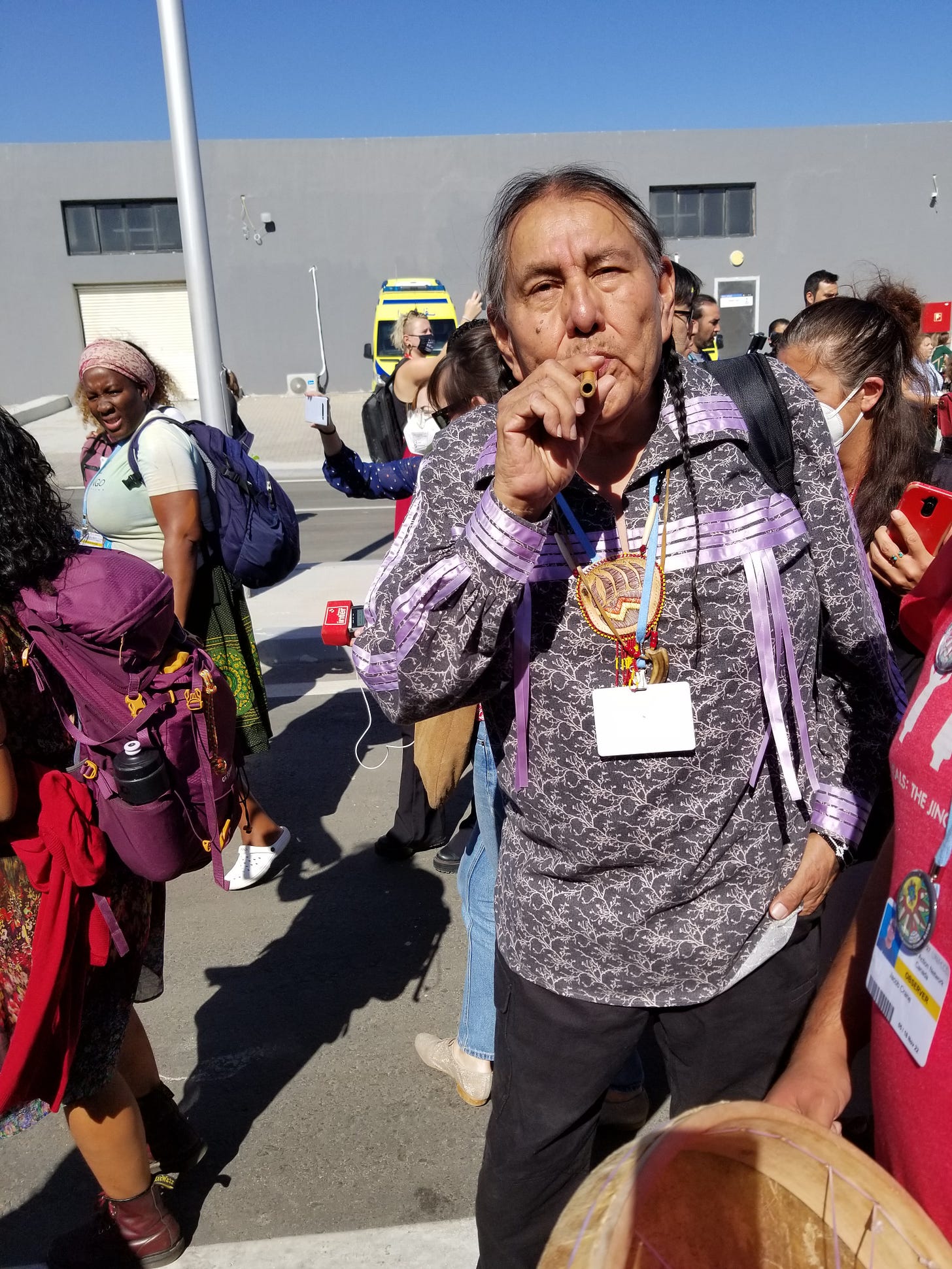
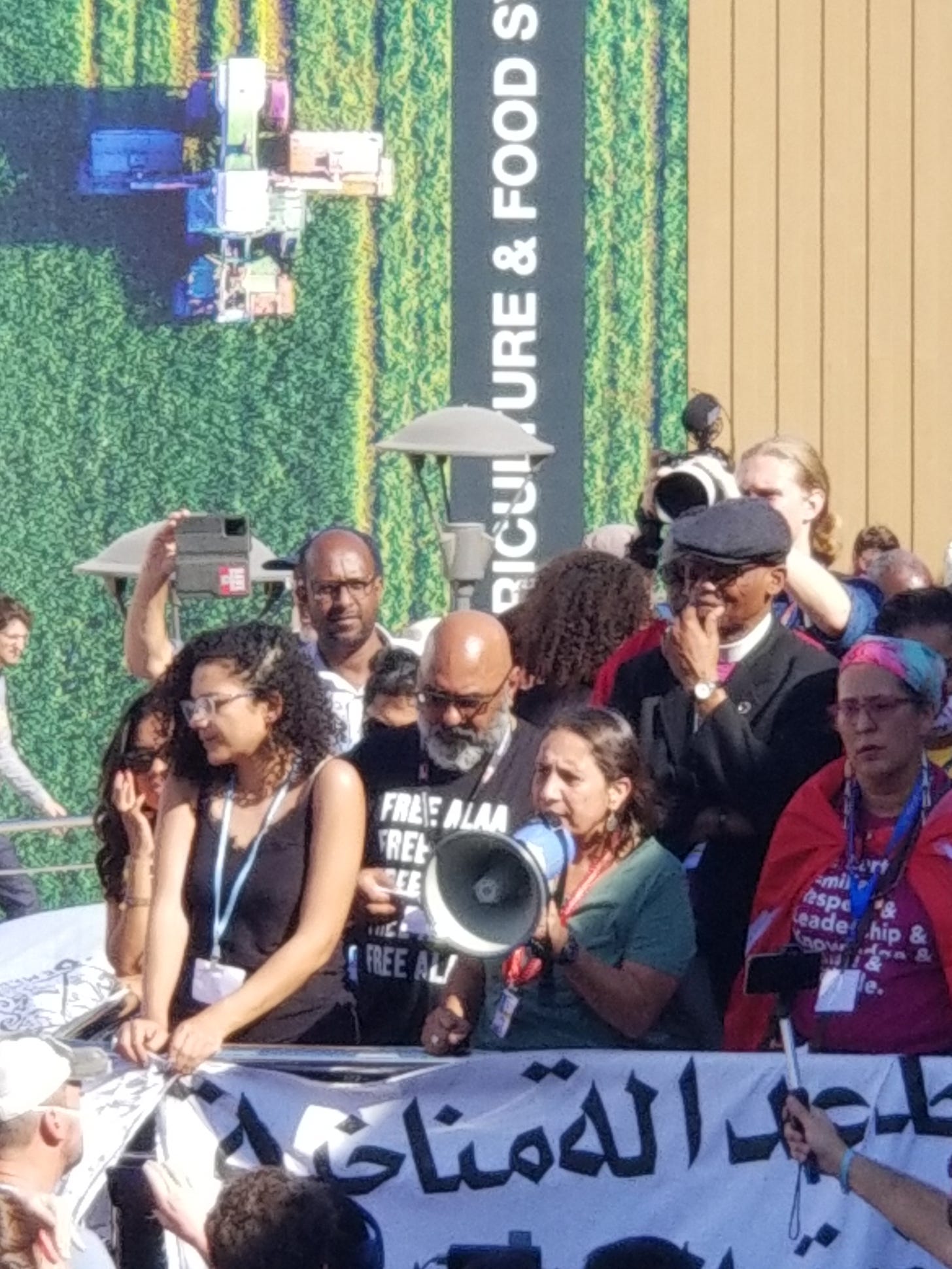
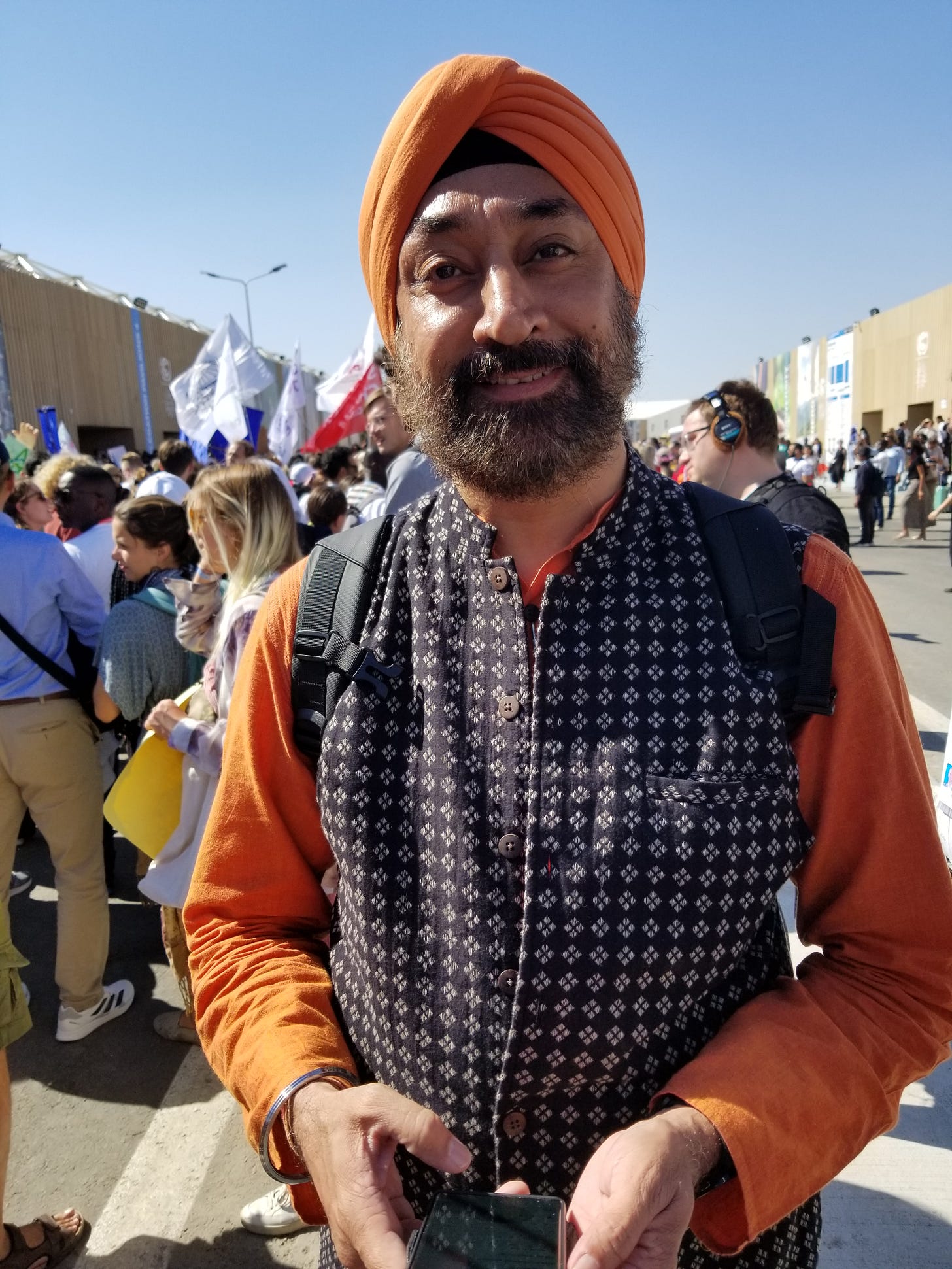
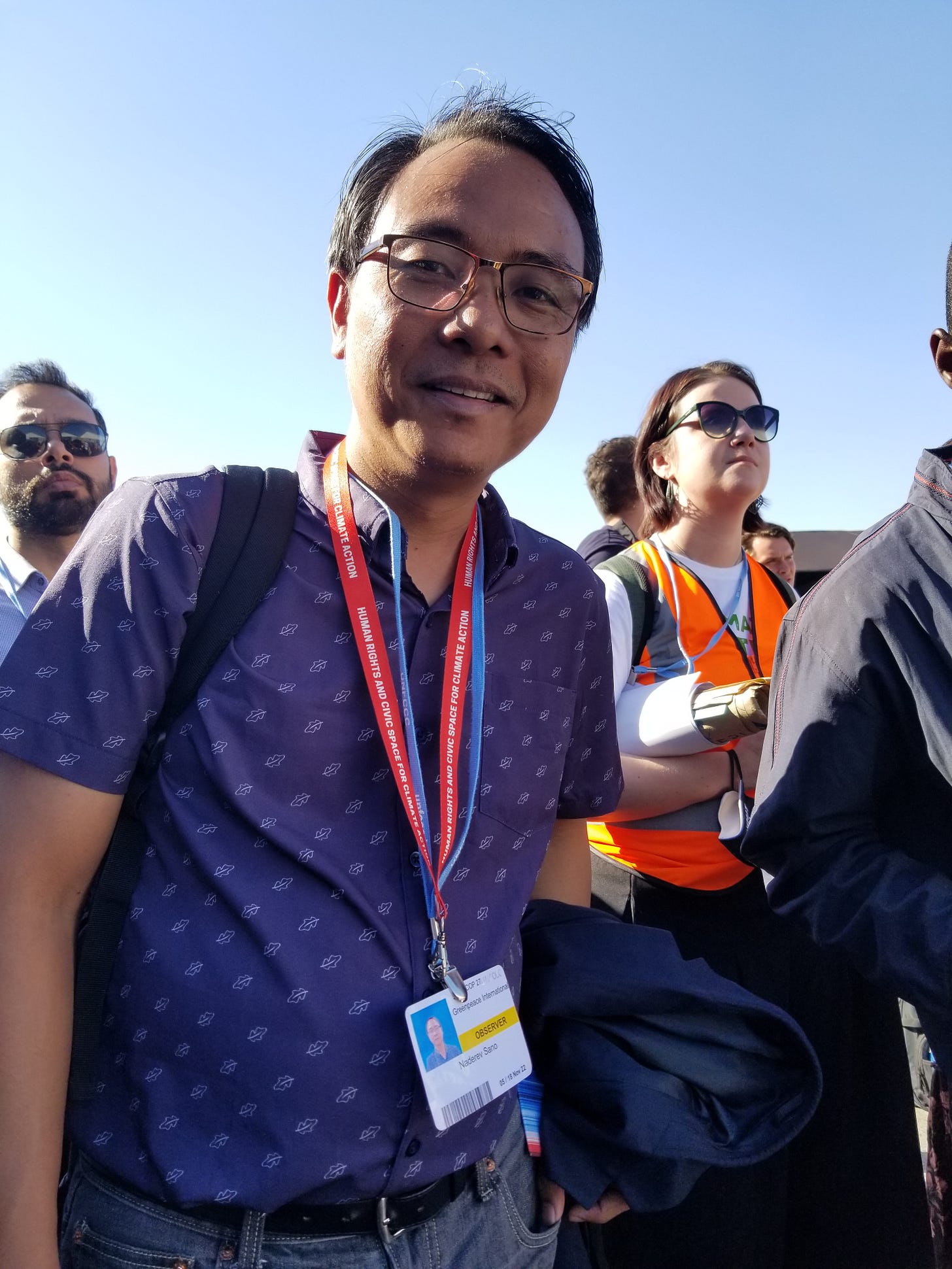

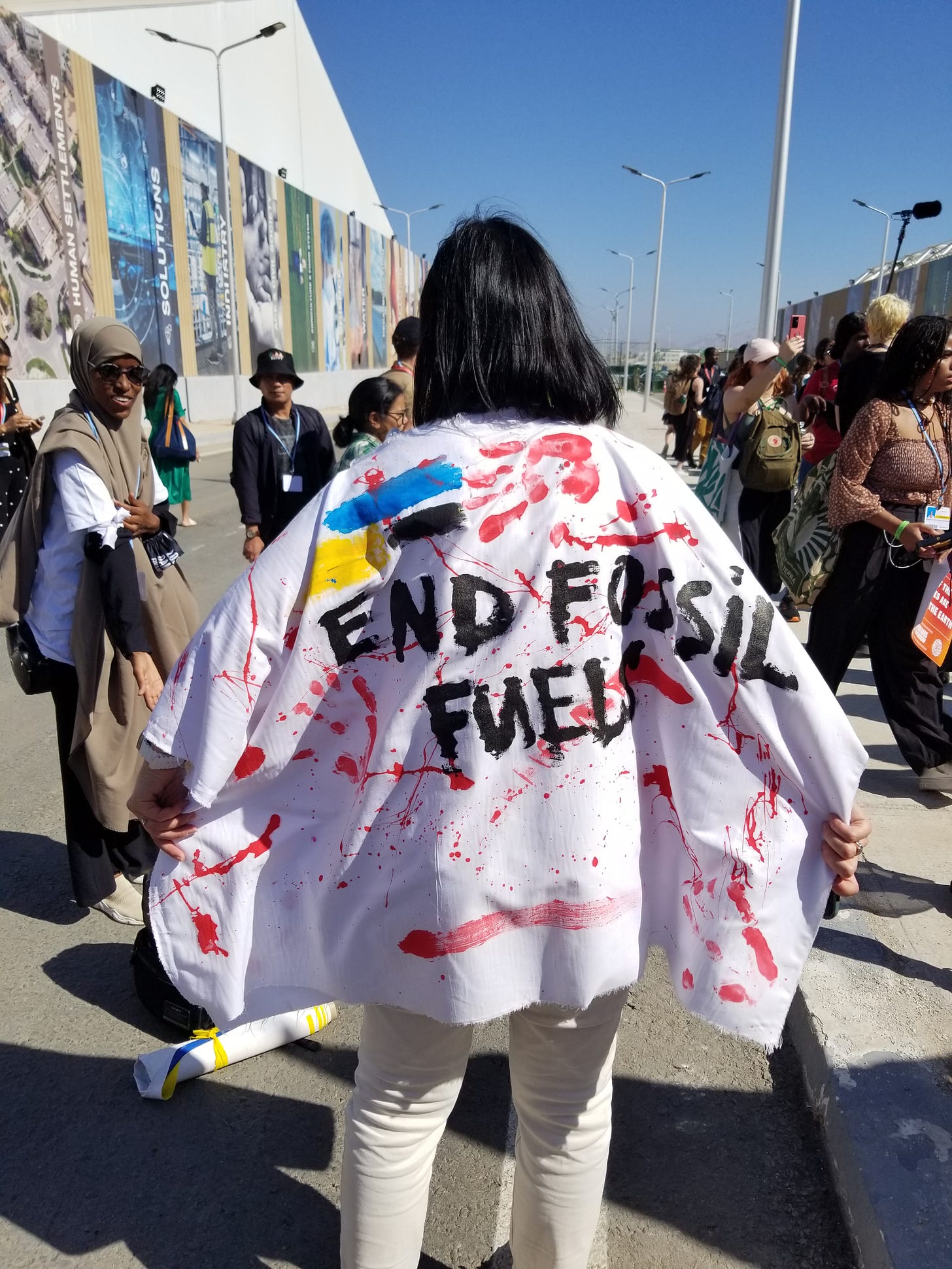
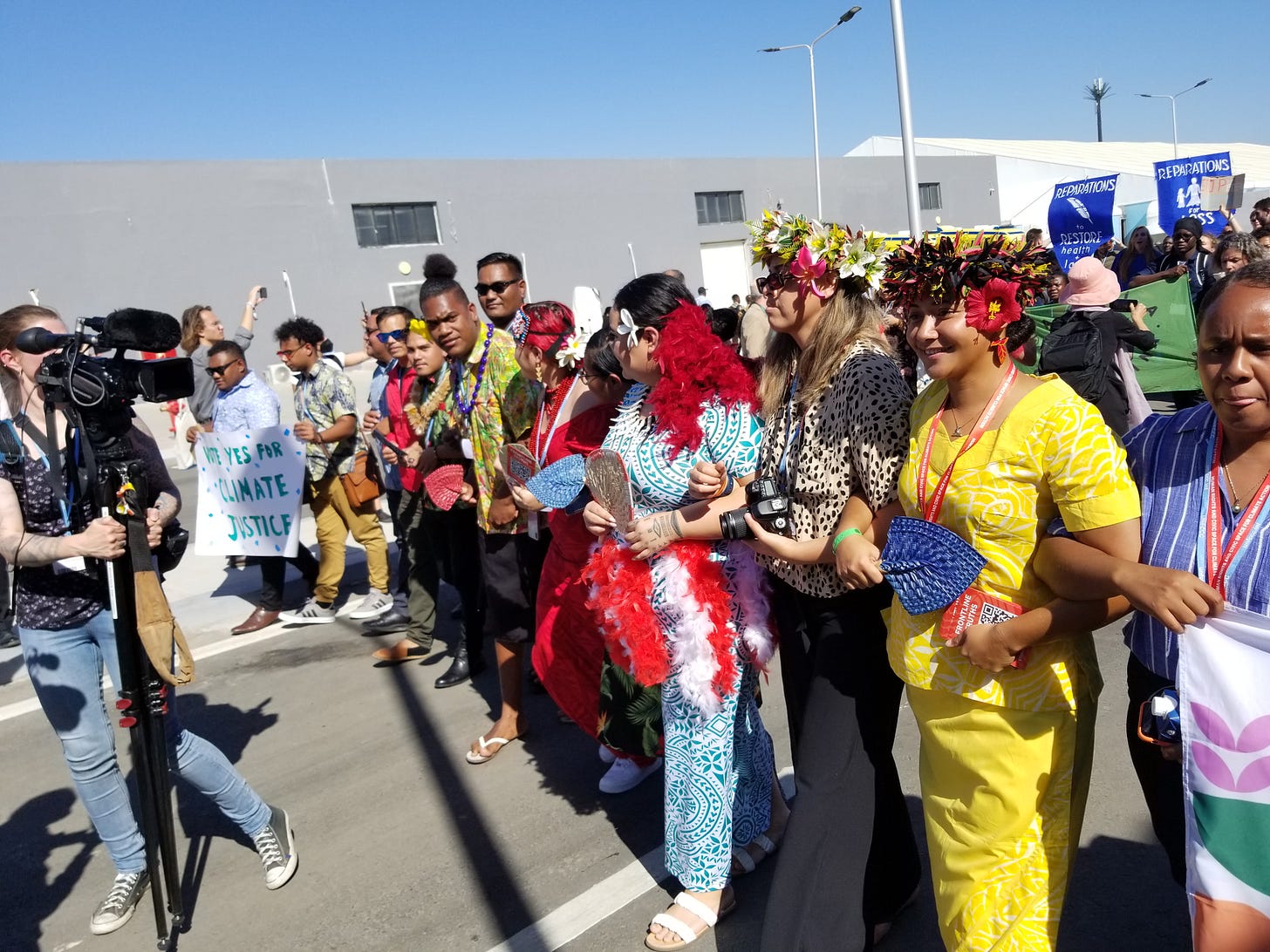
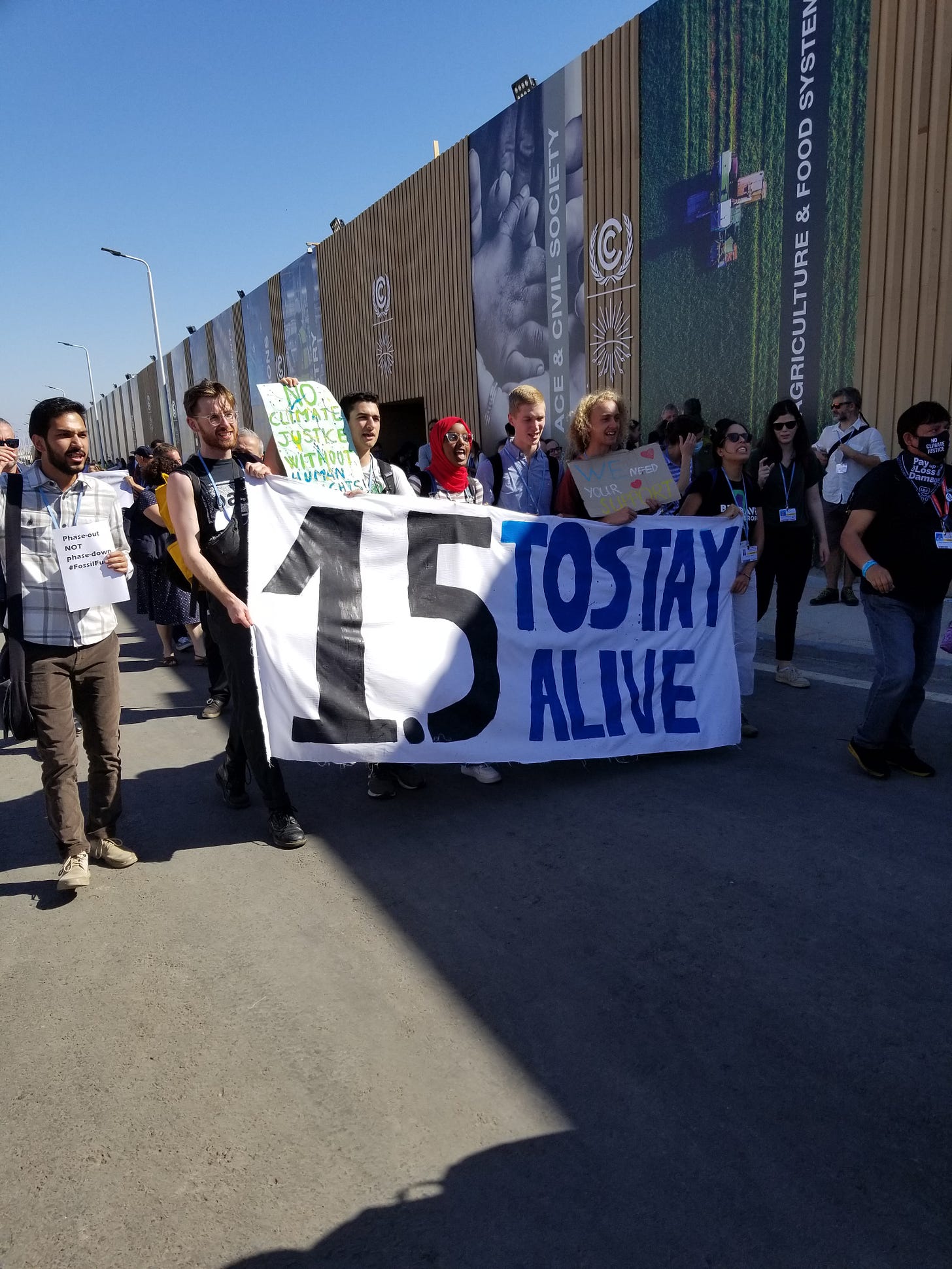
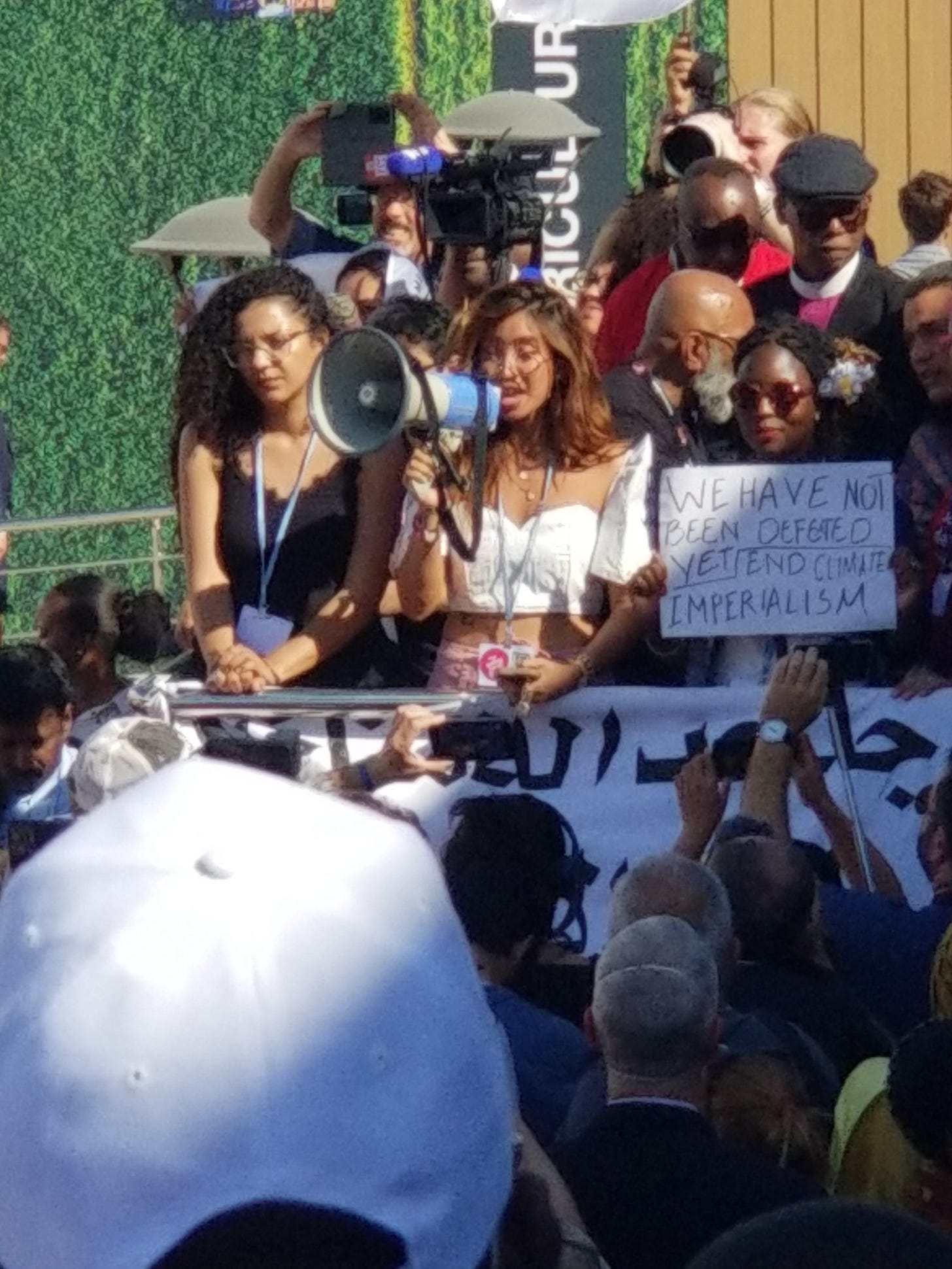



Bill, you are unfailingly generous in your appreciation of others. We appreciate you too!
"Alongside the solar panel, the nonviolent social movement was the key technological innovation of the 20th century; if we survive the 21st, it will be because of both."
Let's move beyond "survive", and set our sights on building a new economy of social equity and habitat longevity in which we can all live our best lives in the 21st Century, and beyond.
The innovation we need to build that new economy is also a legacy we have inherited from the 20th Century: the social institution of Fiduciary Money, the tens of trillions, collectively, worldwide, of society's shared savings that are aggregated into social superfunds for retirement (pensions) and civil society (endowments).
This is more than enough money to finance the new economy we need and want. Right now, this money is being used to finance a different economy, a Neoliberal economy of Growth At All Costs - the economy that is creating the climate crisis, and a cascading cavalcade of other social failings.
We need to Mobilize this Fiduciary Money to finance a new economy, a Post-Neoliberal Economy, of social equity and habitat longevity for living our best lives in the 21st Century, and beyond.
This is our work at Bank of Nature. bankofnature.eco
How do we get "the core of climate activism around the world" to join us in this work?